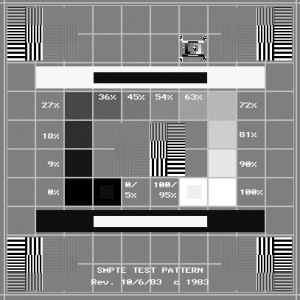Objective
For optimum diagnosis and treatment planning radiographs must be viewed under optimal conditions. No dentist would use a lightbox with a dim bulb; yet many install monitors with insufficient brightness. No dentist would tolerate a lightbox with a stained or marred surface; yet many tolerate monitors with flawed pixels. Dentists spend tens of thousands of dollars on digital radiographic hardware and software, yet many try to save a few hundred dollars on substandard monitors.
Design
By focusing on a few key parameters, the dentist can choose monitors that promote better diagnosis.
- Choose a monitor with appropriate brightness. Most monitors today are sized at 19” or more, and should have a brightness of at least 300 cd/m2. Those under 19” should have at least 250 cd/m2. Note that brightness is often unpublished for laptops; therefore a laptop model should be tried clinically before being bought in quantity.
- Choose a monitor with appropriate contrast. A monitor’s real contrast ratio is a measure of its ability to display both the very dark and the very bright – a key feature for radiographic analysis. The dentist should look for a ratio of at least 1000:1. A ratio of 1300:1 is very good indeed. Beware of being misled by a different rating: the dynamic contrast ratio. This is a measure of how quickly brightness can change – a key feature for video games but useless to the dentist. Note that real contrast ratio is often unpublished for laptops; therefore a laptop model should be tried clinically before being bought in quantity.
By periodically inspecting monitor performance, the dentist can maintain display quality.
- Over time, a monitor’s performance may change. This could be because of physical changes, alteration of its configuration, or differences in the environment around the monitor. Therefore, periodic inspection of monitor quality should be part of a facility’s quality control process. The SMPTE test pattern is widely used as part of such inspection. Display QA, LLC is an organization providing a process online at DentalDisplayQA.com.
By making a few operational modifications, the dentist can improve the diagnostic process.
- Consider the viewing conditions in the monitor’s environment. In school, dentists are taught to lower ambient light whenever analyzing radiography. Similarly, for those monitors where primary diagnosis is done, make sure to darken the viewing area. This can be simply turning down the lights or drawing the shades.
- Consider how the monitor is mounted. The best view of a monitor image is always straight on toward the monitor – views from an angle suffer in both brightness and contrast. So, mount the monitor so that the dentist can naturally view the monitor straight on, without straining or craning. Swivel mounts can be helpful for this purpose.
Conclusion
Getting the best monitor performance is easy to achieve, and need not be expensive. Monitors of appropriate specifications require some shopping, but generally are moderately priced. Inspecting a monitor need not be an elaborate exercise, and not cost you more than a few minutes per month of time. Turning down the lights can be made part of the normal diagnostic process.
You can also view XDR’s recommendation for workstation monitors at: XDR Workstation Recommendations.

